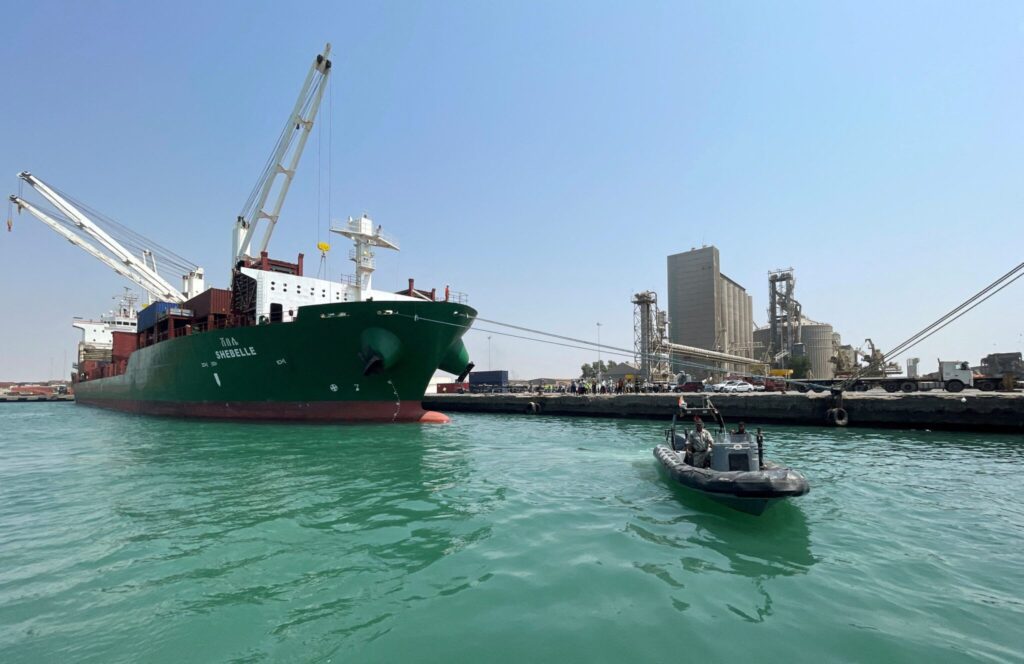International clothing retailers and brands are still choosing seaways, instead of air, to carry goods from Bangladesh to Europe although the rerouting of ships away from the Red Sea has increased the freight charge by more than 30 percent and added 15 days to the sailing time.
Bangladeshi businesses are feeling the heat of the conflict in the Red Sea, one of the world’s busiest shipping lanes, as reinsurers worldwide are charging 3.5 times more premiums to cover the risks brought on by the crisis.
The Red Sea connects Asia to Europe and the Mediterranean, via the Suez Canal. About 12 percent of global trade passes through the Red Sea, including 30 percent of global container traffic.
It emerged as the heart of global tension after Houthi rebels began attacking Israel-linked ships in response to the latter’s devastating war in the Gaza Strip in the third week of October. The crisis deepened after the intensification of counter-attacks on the rebel groups by the UK and the US.
As ships are avoiding the Red Sea, they have to take the lengthy detour around the Cape of Good Hope, adding around 4,000 miles or 6,500 kilometres and 10-12 days sailing time to each trip, according to the BBC.
This requires extra fuel, possibly finding alternative ports of call, adjustments to delivery timetables, and rising costs.
Air shipment is expensive and it ultimately hits the pockets of western consumers, who are not ready currently to pay more as their purchasing power has already seen erosion because of the lingering higher inflation.
International clothing retailers and brands are also avoiding the air shipment as they have to pay higher compensation if they emit more carbon for carrying goods by air.
Airlines charge more than $2.50 for carrying one kilogramme of goods from Dhaka to different airports in Europe, way up from 30 US cents levied on the same destinations if products are shipped from Chattogram port.
Usually, the lead-time from Chattogram port to European ports is 30 days. It has gone up to 45 days since ships started to taking the lengthy detour around the Cape of Good Hope in Africa in late October.
“Still, we are shipping goods from Bangladesh using the waterways although an additional 15 days and 30 percent additional freight charges are required,” said a senior official of a European company, which buys more than $4 billion worth of garment items annually from the country.
If goods are transported by air cargoes, carbon footprint increases and the company will have to pay the compensation, the official told The Daily Star over the phone.
“Rather, it is better to carry the goods through the sea routes.”
The freight charge has gone up by more than 30 percent and the company is paying it as it takes part in the garment business under the freight on board (FoB) method. Buyers bear the freight costs under the arrangement.
The European buyer is sending goods on the basis of priorities, he said.
“We have already directed the suppliers to manufacture goods following shipment priority. So far, no air shipment has been made from Bangladesh after the Red Sea crisis broke out.”
“We have not gone for air shipments just because of the Red Sea crisis since higher costs are involved,” said Shafiur Rahman, regional operations manager of G-Star, a Dutch designer clothing company.
“But we are prioritising the shipments.”
He said nearly 5 percent of the goods that the company sources from Bangladesh are usually air-shipped.
However, his company may place fewer orders in Bangladesh because of the longer lead time, Rahman said.
Shovon Islam, managing director of Sparrow Group, a garment supplier, said some buyers are renegotiating orders as they want quick delivery. In some cases, buyers want expensive air shipment if the lead-time increases, he said.
Faruque Hassan, president of the Bangladesh Garment Manufacturers and Exporters Association, said buyers have not initiated air shipment in full swing yet as the cost would go up.
Some European buyers used to prefer air shipment even before the Red Sea crisis began and it is cited in the related documents.
Of the garment items exported from Bangladesh, less than 10 percent are air-shipped, according to the BGMEA chief.
The usual war-coverage premium is 0.05 percent and the re-insurers have jacked it up to 0.225 percent.
Sadharan Bima Corporation informed its client-insurers in Bangladesh about the increase in the premium, said Bibekananda Saha, general manager of the re-insurance department of the state-run company.
Globally, war-risk rates have spiked from just 0.01 percent of vessel value in early December to 0.7 percent today, said Marcus Baker, global head of marine, cargo and logistics at Marsh, the insurance brokerage and risk advisory unit of Marsh McLennan, in an article of CNN on January 17.
That means the cost to insure a $100 million container ship has spiked from $10,000 per voyage to $700,000 today.
Local garment suppliers say the increased cost stemming from the spike in fares will ultimately passed onto local suppliers indirectly.
One analyst says the rise in the insurance cost means a higher transportation cost, which will ultimately put pressure on end-users as the price will go up.
Daily Star

